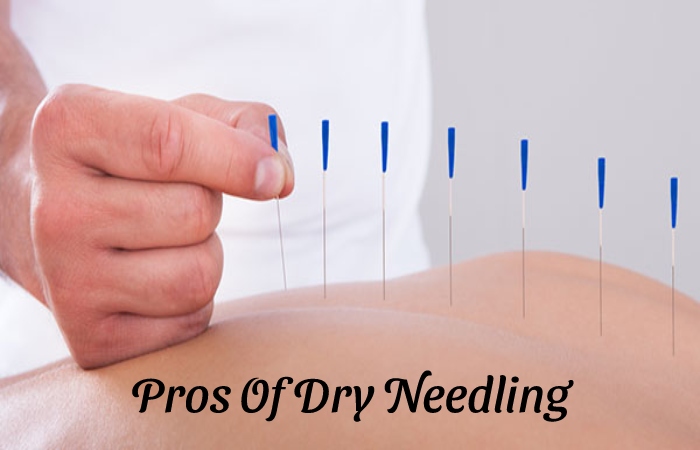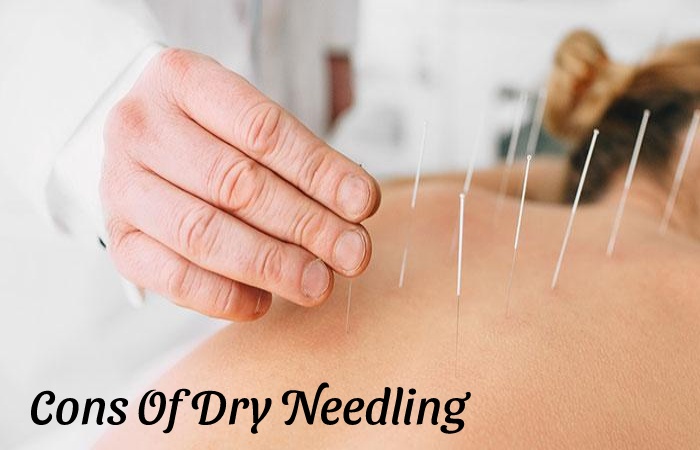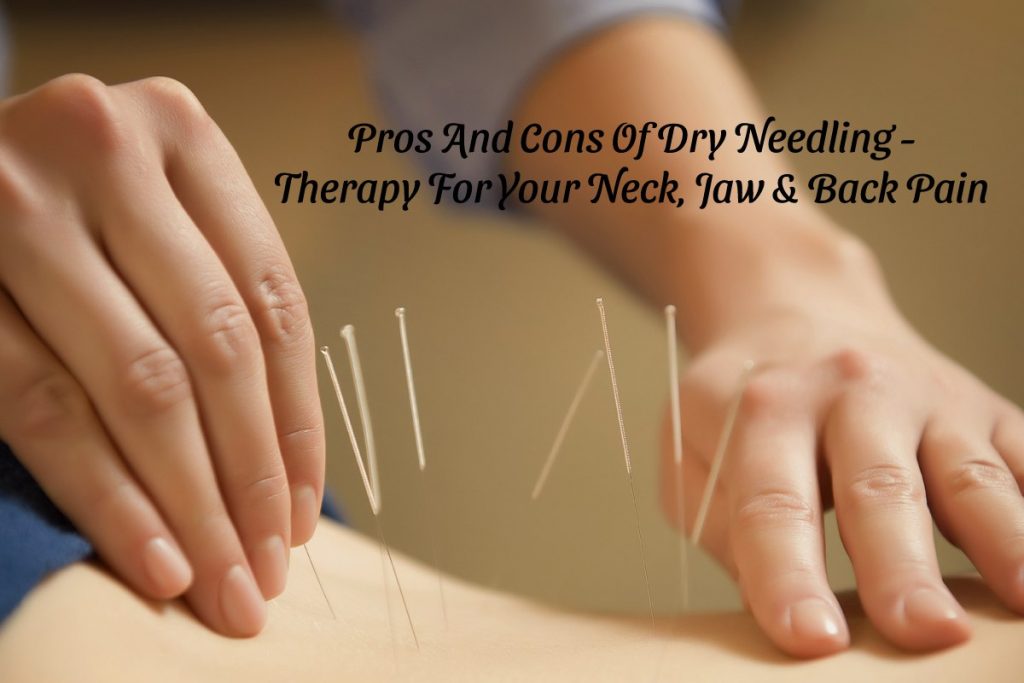The pros and cons of dry needling essential. Dry needling, also known as intramuscular stimulation (IMS), is a manual acupuncture technique that uses thin needles to treat muscle pain caused by trigger points – tight knots beneath or within a muscle. Dry needling is a modern treatment design to ease muscular pain. The procedure, which can do in 15 minutes, combines traditional Chinese medicine and Western science. As many as 80 % of patients feel immediate relief from their symptoms with dry needling; as many as 50 percent experiences long-lasting pain relief.
Table of Contents
Dry Needling
pros and cons of dry needling: A practitioner inserts several filiform needles into your skin during dry needling. The needles are fine, short, and stainless thick steel. The needles do not inject any fluid. That is why they considered dry needles. Doctors place the needles in “trigger points” in your muscle or tissue. The points are areas of knotted or hard muscle.
Dry needling practitioners say the needle helps release the knot and relieve muscle pain or spasms. The needles will remain in your skin for a short period.
The goal of dry needling is to relieve muscle spasms and pain by stimulating your body’s natural healing response. The pros and cons of dry needling vary based on the pain you are treating. Dry needling can be effective for neck, shoulder, leg, arm, and lower back pain, as well as headaches. It can also help with plantar fasciitis (pain in the arch of your foot). The treatment is beneficial for chronic low-back pain that hasn’t responded to other treatments.
For mild or moderate neck or back pain, you may feel a stinging sensation when the needle penetrates your skin. You might experience some stiffness at the site you treated if the practitioner used many needles in one area. Sometimes practitioners recommend following dry needling with heat therapy or ice packs to reduce these symptoms.
A dry-needling session usually lasts about 15 minutes, but it can last up to an hour if more than one type of treatment administered.
The Pros And Cons Of Dry Needling
Pros and cons of dry needling – As with any bodily therapy modality, dry needling has pros and cons, just like other treatments you could take. Now we will discuss the pros of dry needling.
Pros Of Dry Needling

Dry needling can be supportive for many people who have the following health conditions:
Dry Needling Can Help Relieve Pain
The Dry needling may also help treat some types of chronic pain, as low back pain and tension headaches. It might also improve posture, relieve muscle spasms caused by tension, or eliminate specific trigger points commonly found in injured athletes (professional or otherwise). However, there is little research on these benefits. Dry needling has also used for certain types of pain in areas that are hard to reach, such as the foot and ankle. In particular, dry needling relieves joint pain caused by arthritis or an injury.
Dry Needling Can Be Combined With Treatments
Depending on your condition, dry needling may be used alone or combined with other therapies to provide you with relief from pain. Dry needling may be used alone or combined with other treatments to give you relief from pain.
Electrical stimulation included with dry needling may make the treatment more effective for people who have stubborn musculoskeletal problems like chronic low back pain.
It Is Less Invasive
Another pro of dry needling is that it is less invasive than injections. It doesn’t use drugs or involve surgery. Because nothing gets injected during the procedure, there are no risks for allergies, infection, or bleeding.
Additionally, as long as you keep your follow-up appointments with your doctor after receiving dry needling treatment (and take all of your medications as directed), no special preparation is necessary before receiving the procedure.
Cons Of Dry Needling

There is not a lot of research supporting the use of dry needling. The existing research supports its use for relieving mild to moderate pain.
Potentially Painful
Some people experience soreness in the area being treated up to one week after a series of sessions, especially if trigger points are present in more than one muscle group.
Dry Needling Is Not Available To Everyone
Another con of dry needling is that it can’t do on a whim. You have to have an injury of some sort for dry needling to help you.
Dry Needling Can Be Expensive
Another con of dry needling is that it not covered by health insurance. The cost for the treatment I received was $1200. If you decide to try dry needling, make sure that you find a practitioner who has a lot of experience and has worked with people in similar circumstances as yourself.
Dry Needling Can Be Tricky
Another con of dry needling is that there is more of a chance for the needle to move during treatment, In each case, it causes no injury or pain, but it does make you feel uncomfortable because you don’t know what is going on. It can also cause infection if someone doesn’t clean the area properly after treatment and uses the same needle on many different patients without cleaning it between each use. l.
Finding A Quality Dry Needling Professional
Pros and cons of dry needling – practitioners have not required to attend extensive training for practicing dry needling. None of the regulatory agencies control a practitioner’s training, licensure, supervision, or any other requirement for practicing this treatment. It is a technique that suitably trained physical therapist assistants can probably perform, but ideally, a physical therapist should only carry out.
Dry Needling is not 100% Effective
Pros and cons of dry needling – Another con to taking dry needling done by physical therapists is that sometimes there isn’t much improvement with this technique. There is also more minor improvement than other needle techniques such as trigger point injections or prolotherapy.
Some People Might Confuse Dry Needling With Acupuncture.
The pros and cons of dry needling – Both acupuncture and dry needling use thin, stainless steel needles inserted into the skin. For both practices, these needles claim to relieve pain in various ways.
The two treatments differ. One practice has used for thousands of years as a treatment. It also backed up by robust research documenting its effectiveness. The other course of treatment has adopted in the last few years.
Acupuncture relieves pain or discomfort by opening up a person’s energy flow. Dry needling is a treatment designed to stimulate irritable muscles or trigger points.
Understanding the differences between those types of treatment can help you decide what’s best for your pain.
There are several important considerations when deciding whether or not to go ahead with dry needling. Dry needling is not one hundred percent effective. You may experience some relief, but you probably will not feel better immediately. The needles do not treat the causes of your pain. They reduce your muscle spasms or give you temporary pain relief.
Anesthesia is usually not used before dry needling. If the needle accidentally pierces through a vein, practitioners trained to leave it alone so that they do not inject any fluid into your bloodstream.
The most common side effect from dry needling is bruising at the entry point (where the needle inserted). Some people have also developed infections after treatment with dry needling. However, these infections are rare and can prevented by practicing good hygiene.
Related searches:
Dry needling self treatment
Does dry needling help with nerve pain
Does dry needling work
Dry needling and sciatica
Dry needling for neck and shoulder pain
